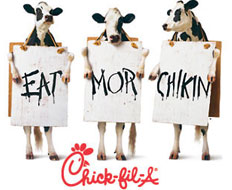Q: What does it take for a quick-service brand to become a great brand?
A: I get this question all the time. Many people look at superstar brands like Apple, Southwest Airlines, and Nike and mistakenly conclude those companies achieved their successes as a result of good timing, great advertising, or just plain luck. But I’ve found that these companies have employed specific, somewhat surprising, techniques that have turned them into industry icons.
Like many of you, I’m fascinated with great brands, so I’ve studied and analyzed quite a few of them in order to understand how they got to be so great. I’ve investigated a range of great brands in our category, from those that are well established, like Starbucks and Chipotle, to up-and-coming brands like Shake Shack. My research and analysis are covered in my new book, What Great Brands Do: The Seven Brand-Building Principles that Separate the Best from the Rest, and I’d like to share some excerpts here.
I’ve found that great brands have some things in common. They have higher-than-average profit margins within their respective categories. People are willing to pay more for their products than for products from competitors. Great brands also have higher “energized differentiation,” which is how Young & Rubicam’s BrandAsset Valuator describes the vision, invention, and dynamism of a brand, based on findings from consumer surveys.
Beneath all of these measures, though, I’ve found a crucial common trait underpinning all great brands: They’ve elevated brand building from a niche marketing function to their business’s core driver. Great brands employ a holistic brand-as-business approach, which puts the brand at the heart of every company decision.
Instead of working on their image and message, great brands are focused on culture, core operations, and customer experience. They actually put off communicating externally. They turn to advertising, promotions, and public relations only after all other elements of the brand have been developed and aligned, including product development and customer experience. This is how they fuel faster growth, cultivate stronger corporate cultures, and develop superior stakeholder relationships.
There are seven key principles, I think, that the world’s top brands consistently live out. Here’s a brief description of each, along with an example from a great quick-serve brand.
1. Great brands start inside. They cultivate a vibrant corporate culture around their brand because they know their culture determines whether or not the brand is embraced by employees and other stakeholders and appropriately interpreted and reinforced with customers. Remember how Howard Schultz’s work to turn around Starbucks in the late 2000s started with an intensive re-training and re-engagement of store managers?
2. Great brands avoid selling products. They develop superior emotional connections through products rather than promote product quality and features. Their managers know people don’t rationally assess products when they make purchase decisions. Pinkberry may have been one of the first to feature tart yogurt, but it quickly became a cultural phenomenon because of the hip identity it embodied and enabled people to express.
3. Great brands ignore trends. Instead of following trends, great brands challenge them and anticipate broader cultural movements that they can advance and build on. Chipotle founder Steve Ells bucked the low-price, cheap-food trend of the late 1990s to introduce people to “food with integrity.”
4. Great brands don’t chase customers. They hold fast to their brand values and positioning and accept that their brand isn’t for everyone. They identify their best target customers and focus on delivering their unique brand value to them, even if it means doing things that are less appealing to other customers. Dunkin’ Donuts proudly targets “everyday folks who keep America running” and doesn’t try to impress the coffee elite.
5. Great brands sweat the small stuff. They overcome organizational silos to align, unify, and strengthen their customer experiences so they make a positive brand impression in even the smallest details. That’s why the employees at Chick-fil-A say “my pleasure” when responding to customers, turn down the corners on the restroom toilet paper, and offer to refill your drinks.
6. Great brands commit and stay committed. They are willing to sacrifice short-term profit to maintain their brand integrity and build strong brand equity over time. Shake Shack CEO Randy Garutti is so committed to preserving the quality of the brand experience that he’s rejected things that threaten to detract from it, like running a catering operation, launching a food truck, and adding several menu items.
7. Great brands never have to “give back.” In lieu of charitable contributions and one-time donations, great brands create value for themselves and for all their stakeholders by pioneering positive social change. Some modify or redesign their products to address social issues, while others change their suppliers or standard operating procedures. Firehouse Subs created the Public Safety Foundation so that its social efforts would be integrated with its brand identity and values. It engages employees, franchisees, investors, communities, and customers in doing well by doing good.
My book discusses these principles more in depth and presents exercises, tools, and action steps that you can undertake to start building a great brand. Check it out and let me know your questions about brand building.











